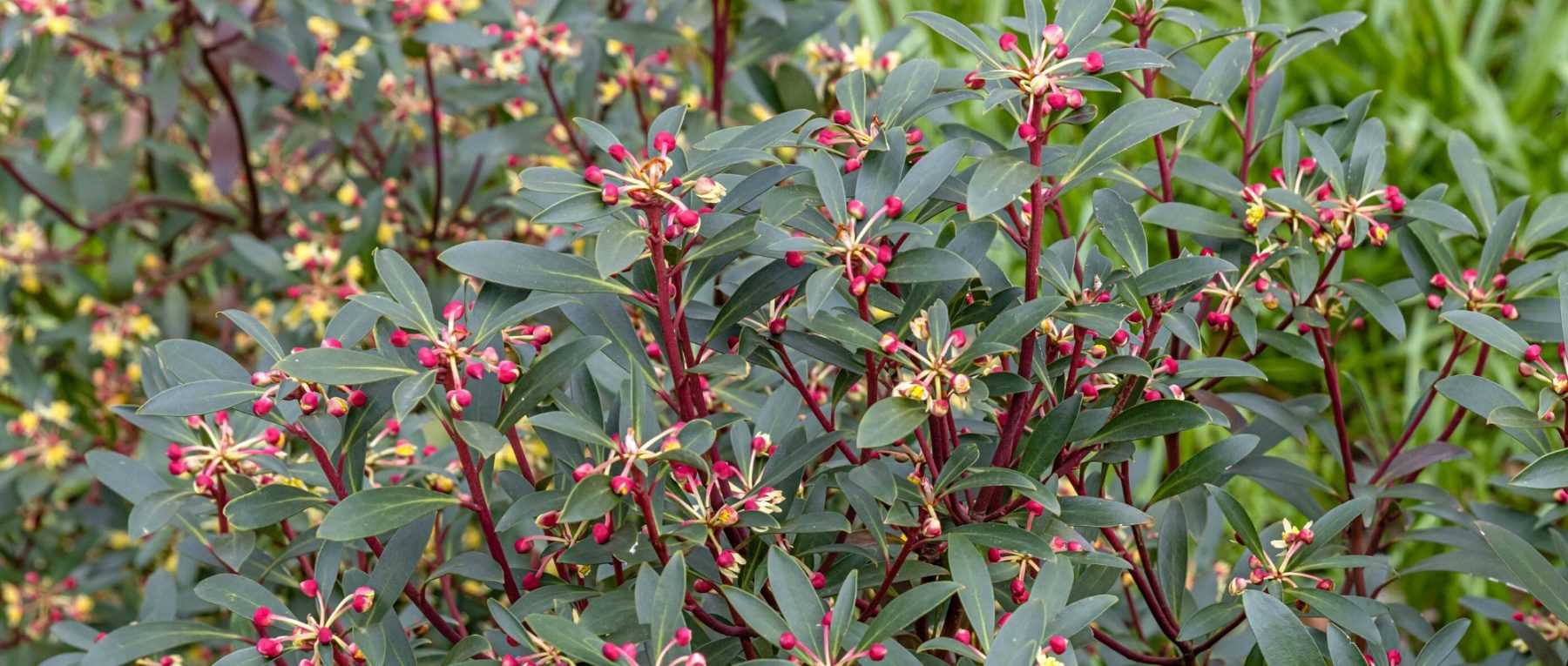
Drimys: Planting, Growing and Caring for Your Young Plant
Contents
Drimys in a nutshell
- Drimys are evergreen bushes, decorative all year round, with beautiful green aromatic leaves
- They produce creamy-white flowering in terminal clusters at the end of spring
- With their dense growth, they’re perfect for creating an effective year-round privacy hedge!
- The red stems of Drimys aromatica create a lovely contrast with its green leaves
- Hardy and disease-resistant, they are nevertheless somewhat tender, and are best suited to mild climate regions
Our expert's word
Drimys are evergreen trees or bushes still relatively unknown, originating from the mountain forests of Oceania, Southeast Asia, as well as Central and South America. They boast aromatic leaves, which release a characteristic fragrance when crushed, and produce clusters of small star-shaped white or creamy-yellow flowers in spring. As evergreens, Drimys provide year-round presence in the garden. Moreover, the Drimys aromatica stands out with its vibrant red stems, creating a lovely colour contrast with the green foliage!
Drimys are robust and hardy bushes, thriving in full sun or partial shade, in fresh, humus-bearing soil, free from lime, and sheltered from strong winds. They prefer mild climates without extreme cold, yet can withstand temperatures as low as -10°C. These bushes work perfectly in hedges or privacy screens thanks to their dense, evergreen foliage! They also pair beautifully with other bushes in the background of perennial borders, or even as standalone specimens to truly showcase their beauty. Discover in this guide all our tips for successfully growing Drimys: how to choose, plant, propagate and pair them!
Botany
Botanical data
- Latin name Drimys sp.
- Family Winteraceae
- Common name Drimys, Tasmanian Pepper, Magellan Cinnamon
- Flowering May-June
- Height between 1.50 m and 3 m
- Exposure sun or partial shade
- Soil type humus-bearing, fresh, well-drained, rather acidic
- Hardiness down to -10°C
Drimys comprises 7 species of evergreen trees and bushes, primarily native to mountain forests in Oceania, Southeast Asia, as well as Central and South America. The greatest diversity is observed in New Guinea. Some species are epiphytic, growing directly on other plants, for example on tree trunks. In cultivation, the main species found are Drimys winteri, native to South America (Chile, Argentina), and Drimys aromatica, which comes from Australia.
Drimys belongs to the Winteraceae botanical family. This family also includes Pseudowintera, Tasmannia (called Tasmanian Pepper), as well as other trees and bushes little known in France, originating from the Southern Hemisphere (Oceania, South and Central America).
The name Drimys comes from Greek and means “pungent” or “sharp”, referring to the flavour of its bark, which can be consumed as an infusion and was once used as a condiment (once ground into powder). Drimys aromatica gets its species name from its fragrant, aromatic berries and foliage. Drimys winteri was named in honour of Captain John Winter, who in the 16th century accompanied Sir Francis Drake on an expedition to Patagonia. He brought back to England samples of this bush’s bark, which he likely used during the voyage to cure crew members suffering from scurvy.
In English, Drimys is nicknamed Mountain pepper, due to the aromatic qualities of its berries and its mountainous origin. In French, it’s called Tasmanian Pepper or Magellan Cinnamon. Its bark, once ground into powder, was indeed used as a pepper substitute in Argentina and Chile. It’s particularly rich in vitamin C.
Drimys has the advantage of being very dense and bushy, making it an ideal bush for a privacy hedge. It reaches a maximum height of about 3 m, sometimes 4 m, in cultivation. However, in its natural habitat, Drimys winteri can grow much larger, reaching up to 10 metres tall. If you prefer a bush with a more compact, rounded habit, choose Pseudowintera colorata instead, a cousin of Drimys (sometimes called Drimys colorata) with attractive coloured foliage that’s particularly suited to small urban gardens.
It takes several years before Drimys begin to flower: flowering only occurs on specimens at least 5 years old. They flower in late spring, usually in May-June, unfolding pretty pink flower buds at the ends of their branches, which then open to reveal small star-shaped flowers. These are grouped in clusters of five to twenty flowers, measuring 1 to 3 cm in diameter. The flowers of Drimys aromatica are cream-white to pale yellow, while those of Drimys winteri are white and larger, with more developed petals. Drimys flowers have a pleasant fragrance reminiscent of jasmine.
Drimys aromatica is dioecious: each bush bears either only male flowers (with stamens) or only female flowers (with a pistil), while Drimys winteri is hermaphrodite (each bush bears flowers that are both male and female).
Drimys have entire, lanceolate or elliptical leaves, thick, and inserted alternately on the stems (one leaf after another). They are evergreen, remaining decorative even in winter. They have a beautiful glossy dark green colour, which in Drimys aromatica contrasts beautifully with the bright red stems! The underside of the leaves is light green – whitish, matte.
The leaves of Drimys aromatica measure 4 to 8 cm long; those of D. winteri are much larger, reaching up to 20 cm long. Their leaves contain glands holding essential oils: they release a characteristic scent when crushed, reminiscent of cinnamon.
There is a variety with yellow variegated foliage: Drimys lanceolata ‘Suzette’. This creates a lovely multicoloured effect between the red stems and green and yellow leaves. However, this variety is rather rare in cultivation.
After flowering (only on female plants when fertilised, for D. aromatica), Drimys produce small rounded black berries, 5 to 8 mm in diameter. They are appreciated by birds. The berries are renowned for their aromatic properties and have been used as a pepper substitute. They have an initially sweet taste, followed by a peppery flavour that lingers in the mouth.
The bark of Drimys winteri, meanwhile, has been used in Argentina and Chile by local populations, particularly for its anti-inflammatory, diuretic, stimulant and anti-scorbutic properties (due to its vitamin C content).
Read also
Take extra care of your evergreen shrubsThe main species and varieties
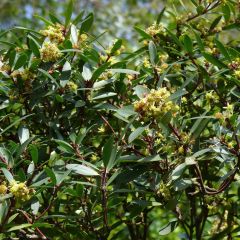
Drimys aromatica
- Flowering time June, July
- Height at maturity 2,50 m
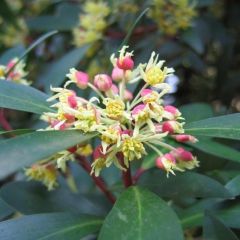
Drimys aromatica Red Spice
- Flowering time June, July
- Height at maturity 2 m
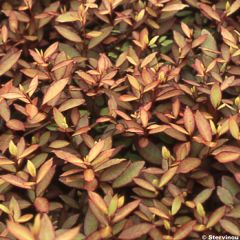
Pseudowintera colorata
- Flowering time June, July
- Height at maturity 1,50 m
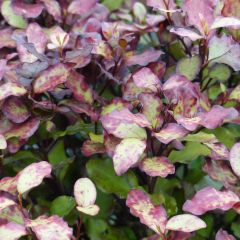
Pseudowintera colorata Red Leopard
- Flowering time June, July
- Height at maturity 80 cm
Discover other Laburnum
View all →Available in 1 sizes
Available in 1 sizes
Available in 1 sizes
Available in 3 sizes
Available in 1 sizes
Available in 1 sizes
Planting
Where to plant?
Drimys thrives in humus-bearing, slightly acidic soil that remains relatively moist (especially in the first few years), without excessive waterlogging however. It does not like calcareous soils, but will tolerate clay or loamy substrates.
Drimys can grow in both sunny and partially shaded locations. Choose a sheltered spot protected from strong winds, as these could make them more susceptible to cold or drought.
Drimys cannot tolerate very cold temperatures, of the order of -10°C, or even -8°C. They are particularly well-suited to the Atlantic coast and especially the mild, humid climate of the Breton and Norman coasts.
With their dense, bushy foliage, they will form a beautiful backdrop for a perennial border, but are also suitable for creating an effective year-round privacy hedge. They can also be planted as standalone specimens, and will even tolerate being grown in a large pot, though you’ll need to be vigilant about watering! In pots, the substrate dries out faster than in open ground.
When to plant?
We recommend planting Drimys in spring, around May, once the soil has warmed sufficiently and there’s no more risk of frost. In very mild climates, autumn planting is also possible.
How to plant?
- Start by soaking the pot in a basin of water to rehydrate the root ball.
- Dig a planting hole, about three times the size of the root ball.
- Replace with soil mixed with well-rotted compost. You can optionally add some coarse sand to improve drainage.
- Remove the Drimys from its pot and position it right in the centre.
- Fill the hole with soil.
- Firm down to ensure good contact between the substrate and roots.
- Water thoroughly.
Continue watering regularly during the first few months.
Maintenance
Since the Drimys dislikes lime, it’s preferable to water it with rainwater rather than tap water, which might be too calcareous for it. Young plants of Drimys must not lack water: be vigilant during the first few years. Once well established, they will tolerate temporary dry spells more easily.
In spring, carry out light pruning to remove dead wood, damaged or poorly positioned branches, and possibly restore a more harmonious shape to the bush. We recommend wearing gloves as the sap of the Drimys is irritating. You can also add a layer of well-rotted compost or manure around its base to enrich the soil.
The Drimys has the advantage of being resistant to diseases and parasitic organisms. Apart from these few precautions, these are trouble-free bushes that require little attention.
Propagation
Sowing
Be aware that Drimys aromatica is dioecious: to obtain viable seeds, you need at least one male and one female plant. It is the female plants that will bear the seeds.
Sowing is best done in autumn, preferably with fresh seeds, as Drimys seeds do not store well and lose their seed viability over time.
- Prepare a bucket or tray with special sowing compost, which has the advantage of being light, fine and free-draining.
- Lightly firm and level the surface.
- Scatter the seeds over the surface of the compost.
- Cover them with a thin layer of compost.
- Water gently with a fine spray.
- Place the bucket in a cold frame, in a bright location.
In spring, you can transplant the seedlings into individual buckets to give them more space to develop. You will need to wait two or three years before planting them out in the garden.
Propagation by cuttings
In summer (July-August), you can take semi-lignified stem cuttings. However, Drimys cuttings are slow to root, with a success rate of around 60%. We therefore recommend taking several cuttings at once to increase your chances of success.
- Take a shoot from the current year’s growth (tender at the tip and slightly lignified at the base), 10 to 15 cm long. Ideally, take it with a heel (the base of the branch from which it grows).
- If there are leaves on the lower part of the stem, remove them, leaving only two or three at the top of the cutting.
- Fill a bucket with a light substrate, then water.
- Dip the base of the stem in plant hormone.
- Make a hole in the substrate, for example using a pencil, then insert the cutting.
- Firm the substrate around it to ensure good contact.
- Place the bucket under cover, in a bright spot but out of direct sunlight.
- We recommend placing the cutting in a humid environment, by covering the bucket with a plastic bag or bottle to create a moist atmosphere. Be careful that the plant does not touch the wall. You will also need to ventilate regularly to prevent rotting.
Association
You can combine Drimys with other evergreen bushes to create a hedge. Choose bushes with dense foliage, such as Elaeagnus ebbingei, Viburnum tinus, Photinia, Thuja, Ligustrum japonicum… You’ll create a beautiful, year-round privacy screen that effectively shields you from prying eyes! For more ideas, explore our selection of evergreen hedge bushes.
Drimys pairs wonderfully with heather soil-loving bushes, which, like it, thrive in acidic substrates. Create a stunning shrub border by combining it with Pieris, Rhododendrons and Azaleas, Hydrangea macrophylla, Kalmias, as well as Japanese Maples.
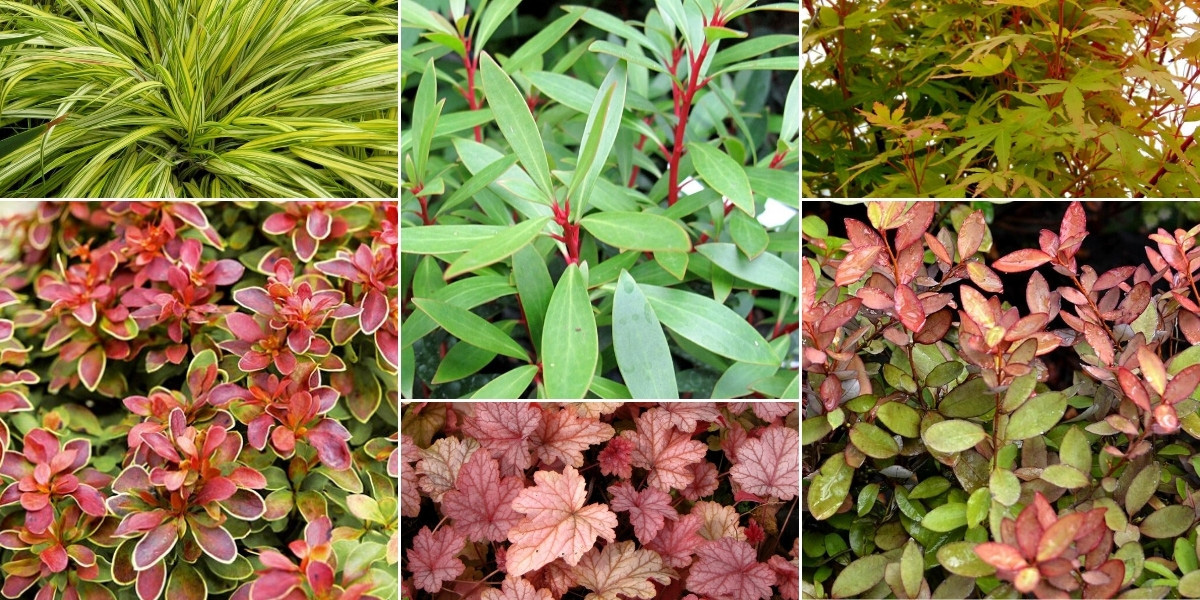

Don’t hesitate to pair Drimys aromatica and its bright red shoots with bushes and perennials featuring colourful foliage in warm tones. Hakonechloa macra ‘Aureola’, Acer palmatum ‘Sangokaku’, Berberis thunbergii ‘Admiration’, Heuchera ‘Vienna’, and Pseudowintera colorata
The red shoots of Drimys aromatica will harmonise beautifully with the bright red young shoots of Japanese Andromeda (Pieris japonica), with the red-spotted leaves of Pseudowintera ‘Red Leopard’, as well as with the changing foliage and red stems of Japanese Maple ‘Sangokaku’. Also consider the splendid foliage of Berberis ‘Admiration’! At their base, you can plant perennials with colourful foliage, such as Heucheras, Hakonechloa, Carex, and Ophiopogon. This will create a highly original and vibrant border!
Useful resources
- Discover our range of Drimys
- Read Alexandra’s advice in Tasmanian Pepper, cultivation and care in the ground or in pots
- Discover our advice sheet: Pairing Drimys
- To pair Drimys: our range of heather soil bushes
- All our range of evergreen bushes for creating hedges, to pair with Drimys
- Discover Olivier’s video on Pseudowintera colorata, a bush very similar to Drimys
- Subscribe!
- Contents


































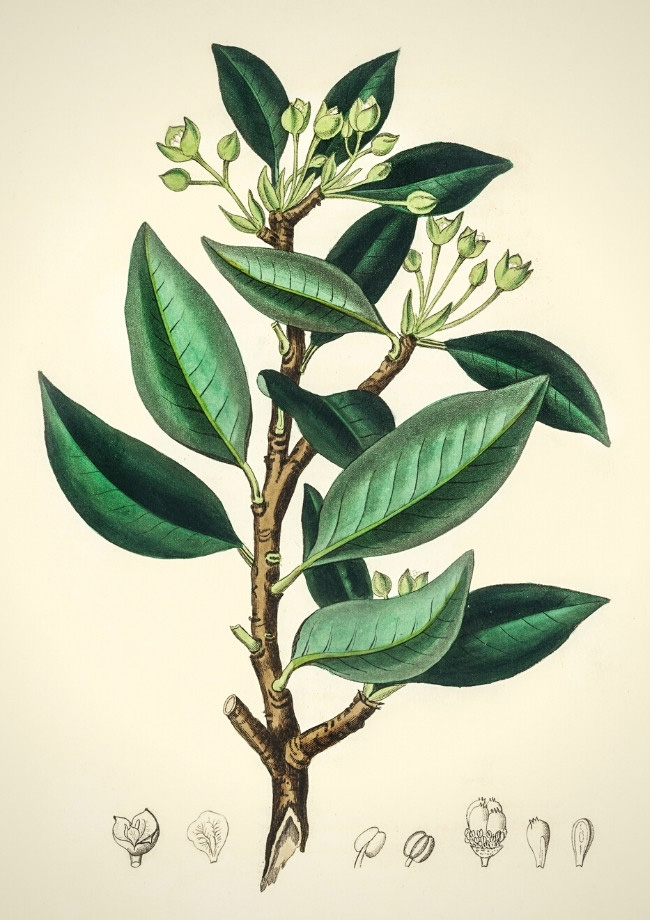
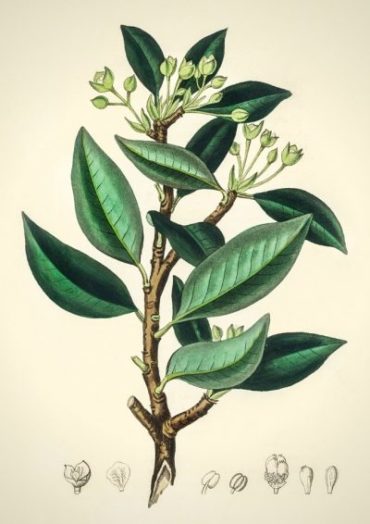


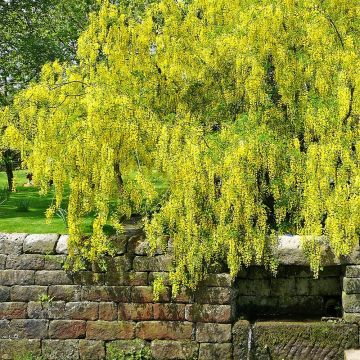
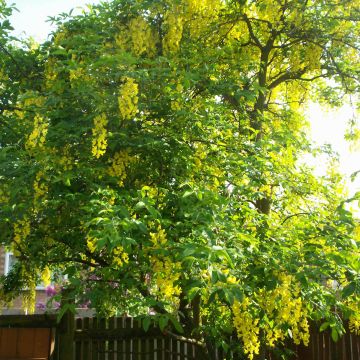
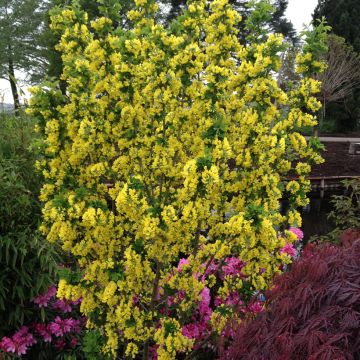

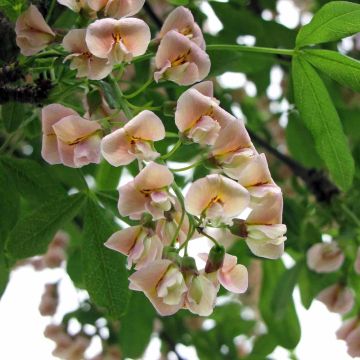
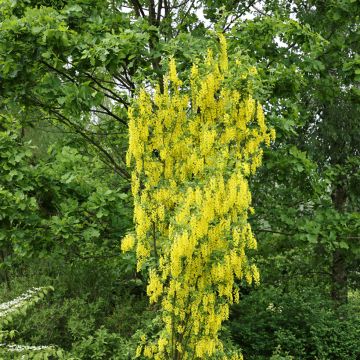
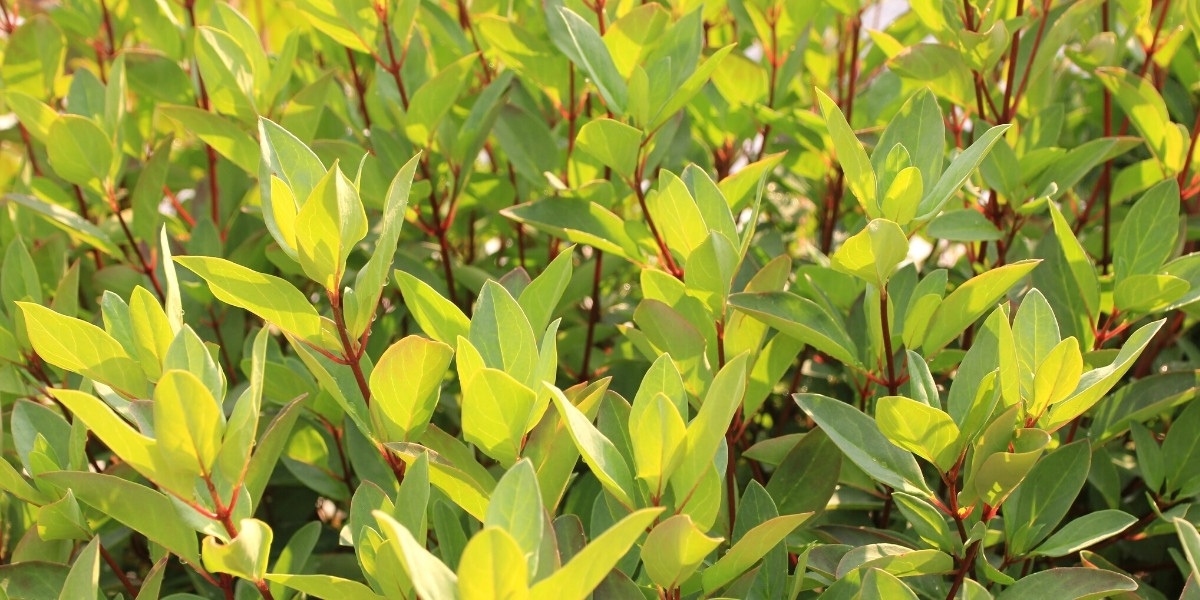
Comments